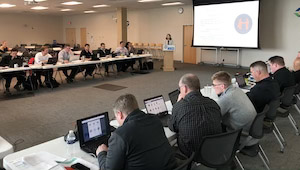


Not all social networks are created equal. Understanding the types of content you’ll find and the reasons audiences use each platform is key to your marketing and sales efforts. For example, I use Facebook to connect with friends and family, Instagram to follow influencers, and LinkedIn to connect with my professional network and to follow industry news.
In our agency, where business-to-business (B2B) marketing is king, we’ve seen a huge interest in LinkedIn. The world’s most powerful professional networking platform is becoming one of the most valuable tools for identifying and nurturing potential sales leads. In December, the company reported 610 million users, with 41.5% using the platform to build relationships with potential customers. With the specific, targeted B2B audience that’s active on LinkedIn, those are sales leads your team can’t afford to miss.
On LinkedIn, your sales team can demonstrate their unique expertise and reach people outside of their existing network. And because it’s a tool that people are already using, your team can meet customers where they’re comfortable. The platform is a perfect tool to help identify and nurture potential sales leads.
Yet the most valuable tool in the business is worth nothing if your sales team isn’t using it — you need them to believe in it too.
Here are a few tips to help get your sales team on board:
We’ve hosted a few of these LinkedIn training sessions with our clients — going over everything from best practices for connecting with other users to what types of industry-specific content to share.
If you’re interested in booking a LinkedIn training session with one of our in-house experts, let us know by sending us a message.